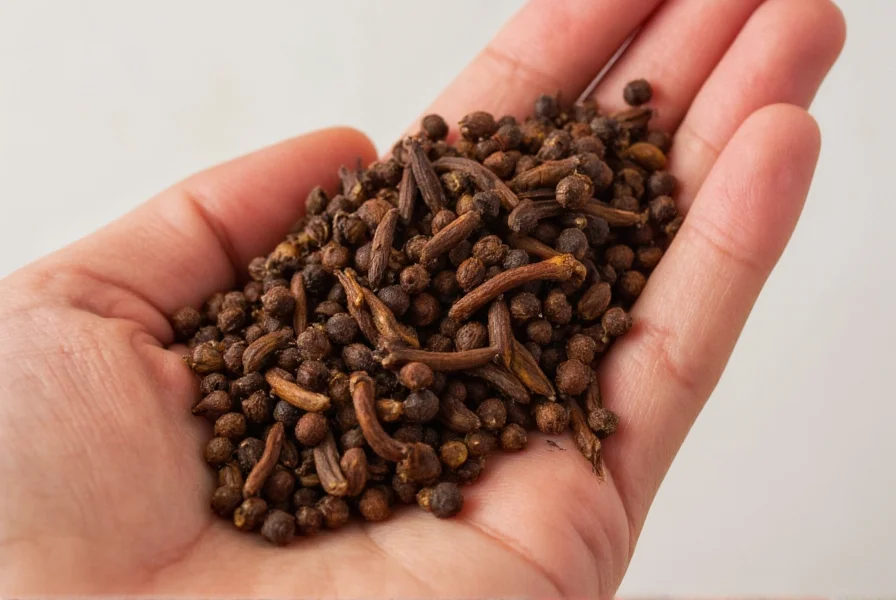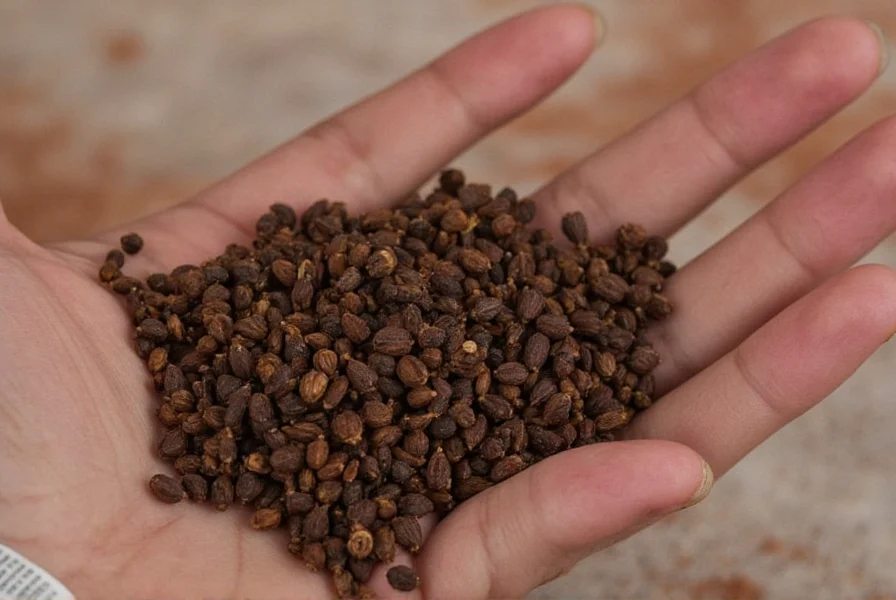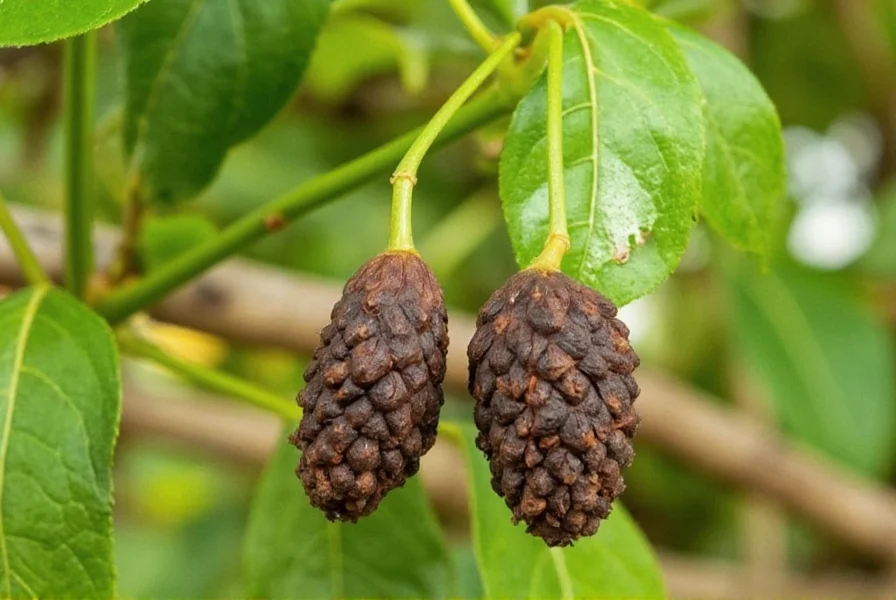Understanding Clove Seeds: Clarifying a Common Misconception
Many people search for "clove seeds" under the mistaken belief that cloves themselves are seeds. This fundamental misunderstanding requires immediate clarification: cloves are not seeds. What we commonly refer to as "cloves" in cooking and commerce are actually the dried unopened flower buds of the clove tree (Syzygium aromaticum), not seeds at all.
The Botanical Reality of Clove Trees
The clove tree (Syzygium aromaticum) is an evergreen plant native to the Maluku Islands in Indonesia. This tropical tree produces several distinct parts:
- Flower buds: Harvested before blooming, dried, and sold as the spice "cloves"
- Flowers: When the buds open into flowers
- Fruit: A small, berry-like structure that develops after flowering
- Seeds: Found inside the mature fruit, these are the actual clove tree seeds
The confusion between "cloves" and "clove seeds" likely stems from the name itself and a general lack of botanical knowledge about this spice plant. Professional botanists and horticulturists consistently differentiate between the spice (flower buds) and the actual reproductive seeds of the plant.
What Are Actual Clove Tree Seeds?
The genuine seeds of the clove tree are contained within the tree's fruit, which resembles a small plum when mature. These seeds:
- Are oval-shaped and relatively large compared to the flower buds
- Have a hard outer shell
- Are not used as a spice in culinary applications
- Primarily serve for propagation of new clove trees
- Contain no significant aromatic compounds like the flower buds
| Characteristic | Clove Spice (Flower Buds) | Actual Clove Tree Seeds |
|---|---|---|
| Botanical origin | Unopened flower buds | Seeds inside mature fruit |
| Size | Approximately 1-2 cm long | Larger, about 2-3 cm |
| Aroma | Strong, spicy, aromatic | Mild, nut-like |
| Culinary use | Common spice worldwide | Rarely used in cooking |
| Primary purpose | Flavoring agent | Tree propagation |
Growing Clove Trees from Actual Seeds
For gardeners interested in growing clove trees from seeds, understanding the proper propagation methods is essential. Unlike the spice cloves you might find in your kitchen cabinet, the actual seeds require specific conditions:
When harvesting clove tree seeds for propagation, follow these steps:
- Collect fully mature fruit (when they turn dark purple)
- Remove the fleshy outer layer to access the seed inside
- Plant immediately while fresh (seeds lose viability quickly)
- Use well-draining soil with high organic matter
- Maintain consistent moisture and warm temperatures (25-30°C/77-86°F)
- Provide partial shade for seedlings
It's important to note that clove trees grown from seed may take 6-10 years to produce flower buds suitable for harvesting as the spice cloves. Many commercial growers use grafting techniques to produce trees that yield quality buds more quickly.
Common Misconceptions About Clove Seeds
The confusion surrounding "clove seeds" versus actual cloves persists for several reasons:
- Nomenclature issues: The word "clove" comes from the Latin "clavus" meaning nail, referring to the shape of the dried buds, not their reproductive function
- Marketing practices: Some vendors mistakenly label clove buds as "seeds" to simplify terminology for consumers
- Lack of botanical education: Most consumers don't learn about the specific plant parts that become common spices
- Similar terminology: Other spices like mustard "seeds" or cumin "seeds" actually are seeds, creating inconsistent expectations
Understanding the difference between cloves and clove seeds becomes particularly important for gardeners attempting to grow their own spice trees. Planting actual clove spice buds (the dried flower buds) will not produce a clove tree, as these buds lack the necessary reproductive structures.
Practical Applications of Clove Tree Seeds
While the actual seeds of the clove tree have limited culinary applications compared to the prized flower buds, they do serve several purposes:
- Tree propagation: The primary use for clove tree seeds is growing new trees
- Traditional medicine: In some traditional systems, the seeds are used differently than the flower buds
- Oil extraction: Clove seed oil has different properties than clove bud oil and is used in specific applications
- Agricultural research: Scientists study clove seeds for genetic preservation and improvement
For those interested in how to plant clove tree seeds successfully, remember that fresh seeds have the highest germination rates. The seeds should be planted with the pointed end down, about 1-2 cm deep in moist soil. Germination typically occurs within 2-4 weeks under optimal conditions.

Conclusion: Setting the Record Straight on Clove Seeds
The persistent confusion between cloves (dried flower buds) and actual clove tree seeds represents a common botanical misunderstanding. When researching clove tree seed propagation or purchasing materials for growing clove trees, it's crucial to seek out genuine seeds rather than the spice cloves. Understanding this distinction ensures successful cultivation and accurate botanical knowledge. Whether you're a home gardener, culinary enthusiast, or simply curious about plant biology, recognizing that cloves are not seeds forms the foundation for accurate information about this valuable spice plant.

Are cloves actually seeds from the clove tree?
No, cloves are not seeds. Cloves are the dried unopened flower buds of the Syzygium aromaticum tree. The actual seeds of the clove tree are found inside the mature fruit and are distinct from the spice cloves used in cooking.
Can I grow a clove tree from the cloves I buy at the grocery store?
No, you cannot grow a clove tree from store-bought cloves. The cloves sold as spices are dried flower buds that lack the necessary reproductive structures for germination. To grow a clove tree, you need fresh seeds from the mature fruit of the clove tree.
What's the difference between clove bud oil and clove seed oil?
Clove bud oil (from the flower buds) contains 70-90% eugenol, giving it strong antiseptic properties. Clove seed oil has lower eugenol content (15-20%) and higher amounts of fatty acids, making it less potent medicinally but useful for different applications like skincare products.
How long does it take for a clove tree grown from seed to produce harvestable cloves?
Clove trees grown from seed typically take 6-10 years to produce flower buds suitable for harvesting as the spice cloves. Trees propagated through grafting may produce harvestable buds in 3-4 years, which is why commercial growers often prefer grafting over seed propagation.
Frequently Asked Questions
Are cloves actually seeds from the clove tree?
No, cloves are not seeds. Cloves are the dried unopened flower buds of the Syzygium aromaticum tree. The actual seeds of the clove tree are found inside the mature fruit and are distinct from the spice cloves used in cooking.
Can I grow a clove tree from the cloves I buy at the grocery store?
No, you cannot grow a clove tree from store-bought cloves. The cloves sold as spices are dried flower buds that lack the necessary reproductive structures for germination. To grow a clove tree, you need fresh seeds from the mature fruit of the clove tree.
What's the difference between clove bud oil and clove seed oil?
Clove bud oil (from the flower buds) contains 70-90% eugenol, giving it strong antiseptic properties. Clove seed oil has lower eugenol content (15-20%) and higher amounts of fatty acids, making it less potent medicinally but useful for different applications like skincare products.
How long does it take for a clove tree grown from seed to produce harvestable cloves?
Clove trees grown from seed typically take 6-10 years to produce flower buds suitable for harvesting as the spice cloves. Trees propagated through grafting may produce harvestable buds in 3-4 years, which is why commercial growers often prefer grafting over seed propagation.











 浙公网安备
33010002000092号
浙公网安备
33010002000092号 浙B2-20120091-4
浙B2-20120091-4